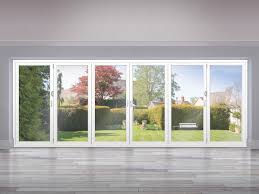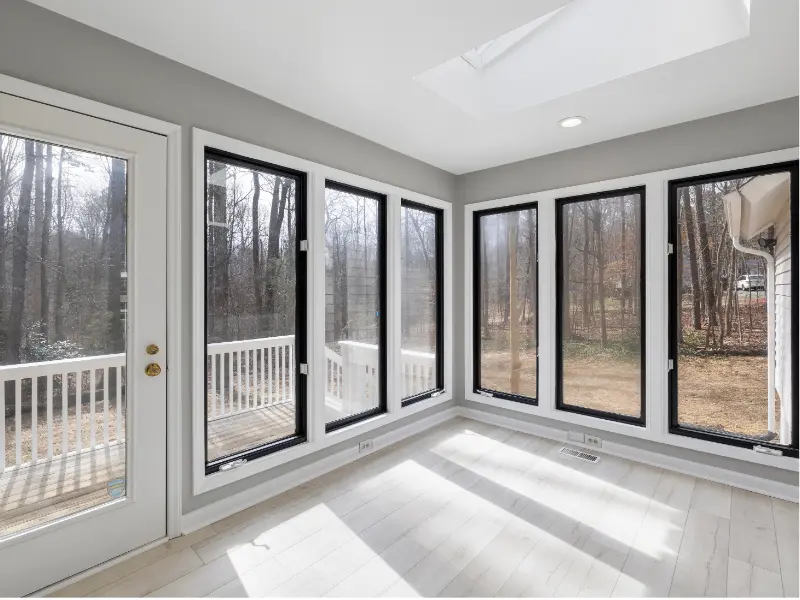In the realm of modern architecture and interior design, glass partitions are celebrated for their aesthetic appeal and functional versatility. These transparent dividers open up spaces, provide flexibility in design, and enhance the flow of natural light. However, a significant challenge with using glass partitions is managing sound. This article explores how glass partitions can be effectively utilized to control acoustics in both residential and office settings.
Understanding Sound Transmission
Sound travels through materials by causing them to vibrate, and the nature of a material influences its capacity to absorb or transmit these vibrations. Glass, with its hard and reflective surface, can transmit sound easily unless specific measures are taken to mitigate this.
Factors Influencing Acoustic Performance
- Thickness: Thicker glass generally provides better sound insulation because it is more massive, making it harder for sound to vibrate through it.
- Laminated vs. Single Pane: Laminated glass, which consists of two or more glass panes bonded together with an interlayer, significantly reduces sound transmission compared to single-pane glass.
- Double Glazing: Incorporating two glass layers separated by an air gap can greatly enhance acoustic insulation, as the air space acts as a buffer that dampens sound waves.
Types of Acoustic Glass
Choosing the right type of glass is crucial for effective soundproofing. Here are some types of acoustic glass options:
| Type of Glass | Description | Acoustic Benefits |
|---|---|---|
| Laminated Glass | Multiple layers of glass with a PVB or SentryGlas interlayer | Reduces sound transmission and offers safety benefits. |
| Double Glazed Units | Two layers of glass separated by an air or inert gas space | Provides excellent insulation against noise. |
| Acoustic Interlayers | Specialized interlayers designed specifically for sound dampening | Enhances the sound-absorbing properties of laminated glass. |
Implementation Strategies
Proper installation and material selection can greatly enhance the acoustic control offered by glass partitions. Here are some strategies to consider:
- Sealing Gaps: Sound can easily travel through gaps and cracks. Ensure all edges and joints of glass partitions are properly sealed.
- Using Acoustic Frames: Frames that incorporate acoustic materials can enhance the soundproofing capabilities of glass partitions.
- Combining with Other Materials: Incorporate other sound-absorbing materials, such as acoustic panels or curtains, to improve the overall acoustic environment.
Tips for Choosing the Right Glass for Acoustic Privacy
When selecting glass partitions for sound control, consider the following tips:
- Assess the Noise Levels: Understand the typical noise levels in your environment. Busy offices or homes in noisy neighborhoods may require higher levels of sound insulation.
- Consult with Experts: Work with acoustic consultants or interior designers who can provide tailored advice based on your specific needs.
- Balance Aesthetics and Functionality: While focusing on acoustic performance, don’t overlook the importance of aesthetics. Modern acoustic glass solutions offer a wide range of design options that don’t compromise on style.

Acoustic Solutions for Different Settings
Residential Settings
In homes, glass partitions are often used to create open and light-filled spaces. However, they can also lead to noise concerns, particularly in open-plan living areas.
- Soundproofing Bedrooms and Studies: Use laminated or double-glazed glass for partitions that divide bedrooms or studies from noisier areas of the house.
- Acoustic Zoning: Consider creating different acoustic zones within the home using glass partitions combined with other materials like wood or fabric.
Office Environments
In offices, glass partitions are popular for creating transparent and collaborative workspaces. However, noise control is essential to maintain productivity.
- Meeting Rooms: Install partitions with high acoustic ratings around meeting rooms to ensure privacy and prevent disruptions.
- Open Office Layouts: Use glass partitions to define quiet zones and collaborative areas, balancing openness with acoustic control.
Takeaway
Glass partitions offer a blend of style and function, transforming interiors with their sleek design and natural light benefits. By incorporating soundproofing measures and selecting the appropriate acoustic glass, you can enjoy the benefits of glass partitions without compromising on acoustic privacy. Whether in a bustling office or a cozy home, glass partitions can be tailored to meet both aesthetic and acoustic needs, ensuring a harmonious and productive environment.


